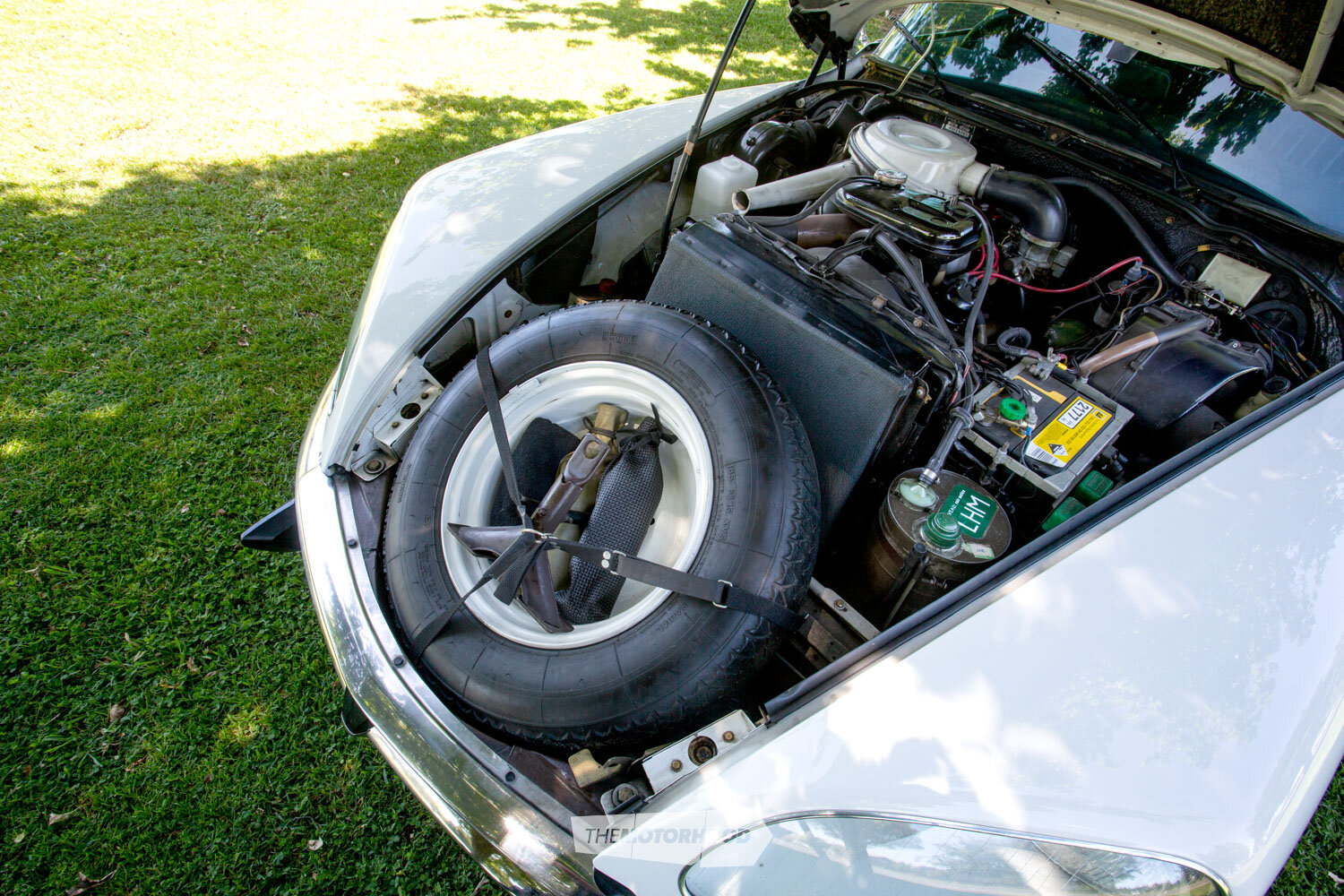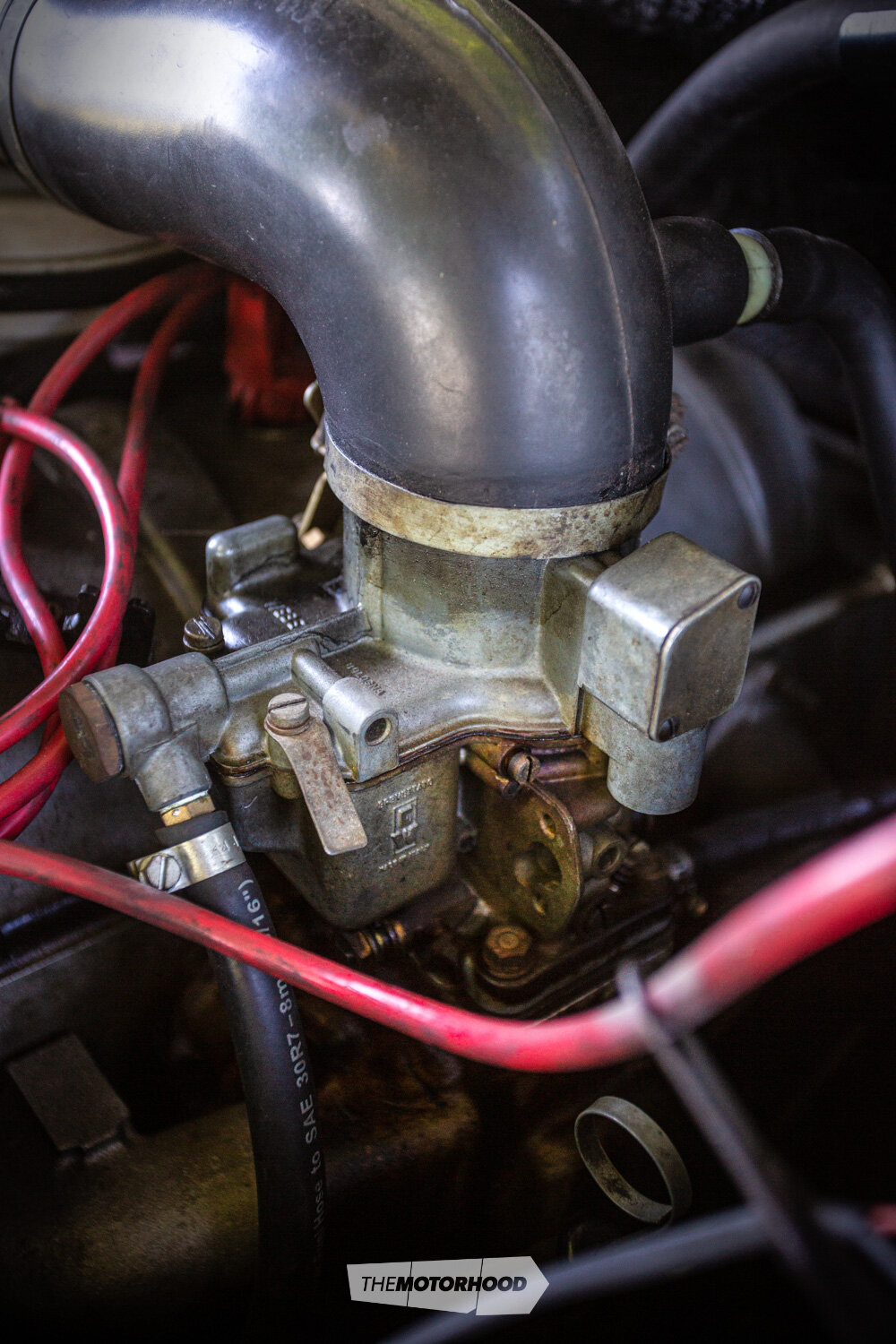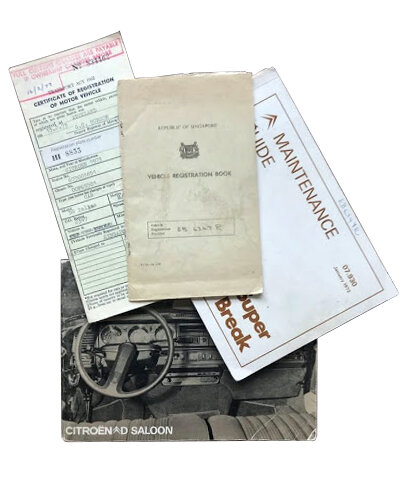With the Citroën’s 100th anniversary year coming to an end in 2019, we take a belated opportunity to recognize this milestone with our feature classic: Citroën’s most audacious, innovative, and beautiful creation of all, the DS
By Stuart Bilbrough, photography by Strong Style Photo

There have been many articles in the best automotive magazines in the world, including New Zealand Classic Car (May 1997, issue 77), about the Citroën DS. Its name derived from Déesse (French for ‘goddess’), whose innovative design was styled by Italian sculptor Flaminio Bertoni and launched at the 1955 Paris Motor Show. During the first day of the show, 12,000 pre-orders would be taken for what was the most positively outrageous and inspiring innovation to hit the automotive industry in decades, if ever. It would not be until March 2016 that this record would be beaten, when the Tesla 3 received more pre-orders in one day: a staggering 180,000.
Not only did it not look like the more conventional straight lined designs of the age, it was designed with superior aerodynamics, body panels a mix of aluminium (bonnet), fibreglass (roof), and steel, and fitted with state-of-the-art hydropneumatic suspension that meant it could travel quickly on poor road surfaces that were common in France at the time.
For the next twenty years, Citroën would make subtle improvements to the DS. These included modifications to the dashboard, enclosing the headlights, streamlining the door handles, increasing the engine size options, and the introduction of the DS Pallas – the Goddess of Goddesses. Despite these changes, the general shape and lines of this distinctive and beautiful French icon would remain the same until it was succeeded by the CX in 1975.
In all, production of the DS was just under 1.5 million. Most cars were manufactured in the Quai de Javal plant in Paris. Citroën was also assembling cars in Slough, England from 1926 up until 1966. The Citroën DS was also assembled in South Africa, Australia, Portugal, and Slovenia.
As the years rolled by and the start of the new millennium approached, some automotive magazines asked the obvious question: “What was the car of the century?”

A Google search “what is the car of the century” landed on a Classic and Sports Car magazine article ranking the winner as the Model T, which seems fair enough due to the innovation of the continuous production line and a vehicle affordable for the masses. The second was the Mini, which continues to be manufactured today in a shape very similar to when it was introduced in 1959, even if the last original Mini rolled off the UK production line in 2000. Third was the Citroën DS, a very commendable placing.
In 2009, that magazine asked car designers another question, “What is the most beautiful car ever?” O n the panel were former McLaren designer Gordon Murray; Ian Callum, famed for his Jaguar and Aston Martin designs; Leonardo Fioravanti of famous Italian design shop Pininfarina/Ferrari; and Marcello Gandini of Bertone.
This time the DS was a clear winner. The Mini did not reach the top 10 and the Model T did not rate a mention.

Stuart was full of regret for selling his DS23, which his wife referred to as “The Mistress”




1973 Citroën DS 23
Engine Citroën Straight 4
Capacity 2347cc
Valves 2 per cylinder, OHV
Bore/Stroke 93.5/85.5mm
Compression 8.75:1
Fuel system Carburetor
Max power 86kW (115 bhp) @ 5500rpm
Max torque 183 Nm (135 ft·lb) @ 3500rpm
Drive wheels Front wheel drive
Transmission 5-speed manual (on the tree)
Suspension hydro-pneumatic including automatic levelling system and variable ground clearance
Brakes Power assisted disc
Steering Power assisted rack and pinion
Dimensions
Wheelbase 3.124 metres
Length 4.902 metres
Track F/R 1516/1316mm
Width 1.803 metres
Height 1.473 metres
Weight 1320kg
Performance
Max. Speed 179kph
0-100kph 11.5 seconds
Standing quarter mile 18.2 seconds





Love lost and found again!
Like all cars there are the favourites. When it comes to the Citroën DS, there are those, like the afore-mentinoed panel and certain former French presidents, who love it, and there are those who think it is an acquired taste.
Stuart Bilbrough sits squarely in the ‘love it’ camp. When seeing his first DS in the late ’80s, owned by Max Earnshaw, a manager at the Christchurch-based accounting firm Stuart had recently joined, he set his sights on owning one.
It wouldn’t be until returning from his long OE in 1999 that he would buy his first DS, a 1974 DS23 from Masterton-based Citroën specialist, Terry Falkner.
Stuart kept his DS as a daily driver, unless it was raining or even threatening to rain, until 2006 when work commitments took him and his young family to Singapore and Bahrain. Instead of storing his DS to await an uncertain return, and with an impending sense of loss, Stuart sold it to Northland-based Rosco Pennall and bid a reluctant farewell.
With the financial crisis in full swing, Stuart and family returned to New Zealand in 2010, which was earlier than anticipated. By this time, Stuart was full of regret for selling his DS23, which his wife referred to as “The Mistress”. Stuart reconnected with Rosco and by 2014 was once again reunited with his Mistress.
Fate would not shine favourably on a long term relationship with this brun scarabee–coloured Goddess when a short two years later, while returning from a drive to Hamilton back to home in Clevedon, Stuart stopped to buy a paua fritter from a food caravan on the north side of Huntly. The most unlikely accident would occur when a chap lost control of his Holden Cruze and careered off the road at exactly the spot where the Mistress was parked, writing her off.
As people drove past on their way north from Rotorua or Taupo, or south after showing their car at Hampton Downs, or, for the lover of burnt rubber, the Meremere drags, they would have slowed down to share the grief of a broken car and a broken man.
For reasons Stuart cannot clearly explain, whether a rebound reaction from losing the Mistress or a glass too many red wines while trawling through Trademe, he would place the winning bid and become the proud (sometimes perplexed) owner of a 1957 Studebaker Champion with a ridiculous 79 miles on the clock since new. You can read more about this very original yank tank with a staggering New Zealand history in New Zealand Classic Car magazine (April 2017, issue 328).

The problem Stuart found with the limited mileage and pristinely original right-hand drive Studebaker was that the value was in the low mileage. Driving a classic like a DS Citroën was what he missed and chilling in the armchair soft seats on a classic sunny Sunday drive.
It would be nearly three years until Stuart saw an example that would meet his exacting DS replacement needs. It needed to be post ’72, a DS23, and, ideally, a Pallas, which his former Mistress wasn’t.

About HC9090
This feature Citroën DS23 Pallas was purchased new by New Zealand Army serviceman David Louisson while stationed in Singapore. David purchased the DS23 Pallas from Henry Ang Agencies Pte. Ltd, 9 Leng Kee Road (now an Audi dealership). The DS was first registered 14th August 1973 under the Singapore plates EB6347R.

The DS was imported into New Zealand and first registered under her new plates, HC9090, on 13 February 1975. We assume David held onto the car long enough to avoid the heavy taxes of the time before selling it to Wellington architect, Barry Ellison, in May 1977. By this time, the DS had completed just under 30,000km.
Terry Faulkner was the agent when the DS was sold to Kevin Beamish in July 1981. Kevin owned HC9090 for the next ten years before selling her to David Cranwell in August 1991. During David Cranwell’s ownership, Terry Faulkner gave the DS a complete overhaul and repaint.
Kevin would say, “I always thought the DS was the cleverest and most competent car on the road, and of course the most beautiful, and I’m not sure anything has surpassed it.”
Over the next two decades, David would sell this Goddess back to Kevin and then David would look to buy her back from Kevin. It was now 2012, and, unfortunately for David, he was unable to complete the transaction, and Paul Daborn of Hamilton would become the next proud custodian until Stuart bought her in mid-2019.
Like all of the former owners of HC9090, Paul kept the car in impeccable condition, even down to the factory-recommended Michelin 185 HR 15 tyres. Paul frequently drove to Clark’s Beach in South Auckland to have her serviced by well-known Citroën expert David Jones.
Stuart comments: “This DS is in spectacular condition. It has certainly been worth waiting for. The car drives incredibly well and I’d say better all-round than my last DS. She effortlessly drives at 100km and handles the long straights and twisty country roads around Clevedon and the Franklin area with ease. I had forgotten the smiles, comments, and thumbs up the DS constantly gets. It is so cool!”
Stuart adds that his wife Diana also seems to be pleased, though begrudgingly, to see the DS taking its rightful place in the garage again.
The Mistress is back!
This article originally appeared in New Zealand Classic Car issue No. 351


